
Conduct regular home safety assessments
While your loved one is living at home with you, a home safety assessment is an especially important task. “As your loved one ages, there are certain hazards in your home that you may not have noticed before. To avoid dangerous accidents, you must conduct regular home safety assessments,” states Robert “Kim” Lee, President of the home health agency, Flourish in Place in Orlando, FL. “A complete and accurate home safety assessment should include assessing fall risk, adding crime prevention measures, purchasing medical alert devices, and creating a robust safety plan with your loved ones. You can also enlist a professional’s help to advise you on senior home safety guidance and assist with any specific home modifications.”
“Be sure to leave emergency numbers in an accessible location for quick reference,” suggests Central Scottsdale Assisted Living located in Scottsdale Ranch. Keep emergency numbers and your home address near all telephones and displayed on the fridge.
Work with a professional
In-home care services offer various levels of service to fit your circumstance. In-home caregivers can help with day-to-day tasks like cooking and grooming, while also ensuring your loved one is safe in their home. Or, on days when you’re unavailable, an elder companion can spend time with your loved one to prevent social isolation.
“As we age, there are new things for us to consider as our bodies and minds don’t always do what we want,” says Jessica Hawk, Co-founder, VP, and Director of Love Right Home Care Referral Agency in San Diego, CA. “When limitations become an issue, it’s important to be open to help, whether from family members or outside sources like hiring a caregiver or assistant. Otherwise, daily tasks can begin to pile up.”
“Caregivers can also assess health changes and offer support and suggestions that will make life easier and safer while offering physical assistance if needed,” continues Hawk. “They’re often the eyes and ears for family members that don’t live close by, offering peace of mind knowing their loved one is well cared for. People need people – we’re not meant to do this life alone.”
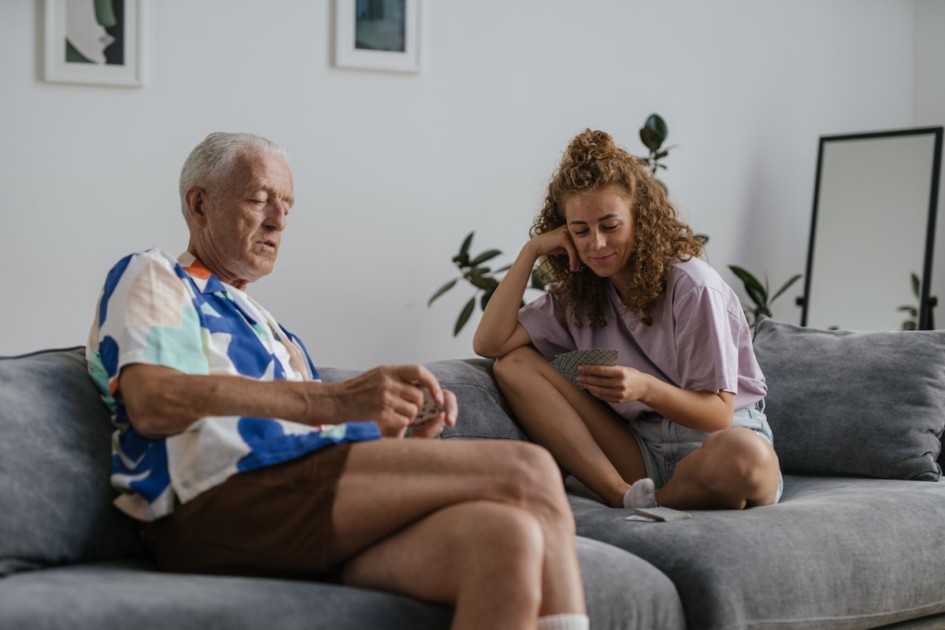
Research your financial assistance options
It’s true that the upfront costs for home improvements and modifications can quickly add up. “Aging in place programs are vital in helping the elderly remain safely in their homes. This can include modifications of the home from adding ramps, rails, grab bars, walk-in tubs, and widening entrances,” says Polish Care Services, a caregiver agency in Farmington, CT. But, it’s no secret that remodeling costs can quickly add up.
“Luckily, if the project is done through a professional and qualified service, there may be funding available to help seniors subsidize these modifications,” states Polish Care Services. Resources and programs can look like home improvement grants, equipment loans, and low-interest loans. In addition, there are other programs that offer financial help like Medicare Advantage, Non-Medicaid Government assistance and Medicaid HCBS Waivers, Veterans programs, and non-profit organizations.
Explore assistive technology
Technology can also help streamline everyday tasks and foster independence. “When caring for a loved one with Alzheimer’s disease or related dementia, it’s important to evaluate the safety of the overall home,” shares Peter DeMangus, chief marketing officer at Solterra Senior Living, with communities in Chandler, AZ and White Mountain, AZ. “Today, more than ever, many available resources can provide in-home technology to seniors who suffer from cognitive decline. This technology includes medication reminder dispensers, accident sensor alert systems, and wander guard products.”
One example is teleCalm, a dementia-friendly phone service that helps loved ones stay at home longer while preventing phone-related problems. It helps empower families to stop unwanted incoming and outgoing calls, late-night calls, repeated calls, 911 abuse, and fraud calls so your loved one can be confident that the only calls they receive are good calls.
Keep any potentially dangerous household items out of reach
Medications, kitchen and bathroom cleaning supplies, alcohol, razors and other sharp objects, tobacco products, firearms, lighters, and other potentially hazardous objects can be dangerous for someone who is living with Alzheimer’s. Be sure to secure these hazards in a locked location.
Store your fire extinguisher somewhere easily accessible to you but not to your loved one. Check the smoke detector and keep up with fresh batteries as needed.
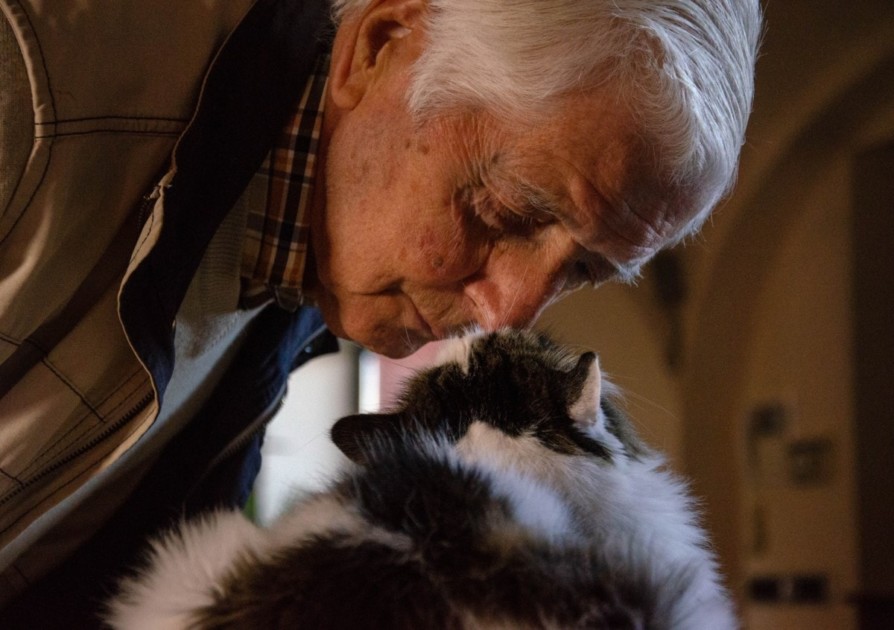
Upgrades for the home’s exterior
Install a ramp
Even if your loved one isn’t in a wheelchair, steps are often more challenging to navigate and pose a significant tripping hazard to someone with Alzheimer’s. Place landings at the top and bottom of the ramp and railings on both sides. The ramp itself should be reflective and textured, especially if you live somewhere prone to icy winters or rainy summers. Make sure walkways have enough traction to help prevent slipping.
Clean up the landscaping
Trim back any shrubs or plants that may intrude upon the walkway or porch, especially prickly ones. Opt for low-maintenance landscaping, and don’t forget to add exterior lighting near pathways and stairs to avoid trips and falls.
Consider posting a “No Soliciting” sign
It’s wise to hang a “no soliciting” sign near your front door to help protect your loved one from a scam. Because the disease impacts the cognitive abilities necessary to discern a stranger’s true motivations, people with Alzheimer’s are often polite and trusting of strangers, making them vulnerable to manipulation. Scams can come in many forms – from unsolicited home maintenance people or fake utilities representatives – so it’s best put preventative measures in place.
Install discrete door locks and alarms
Those diagnosed with Alzheimer’s are often prone to wandering, so you may need to take additional measures to secure your home. Consider installing a home security system and place exterior door locks somewhere uncommon or out of reach. That way, if they have a particularly rough day and attempt to flee out of confusion, it’ll be harder to walk out the door. You can also strategically place a wind chime to act as an alarm in case your loved one gets overzealous trying to get out. And, be sure your loved one doesn’t have access to car keys.
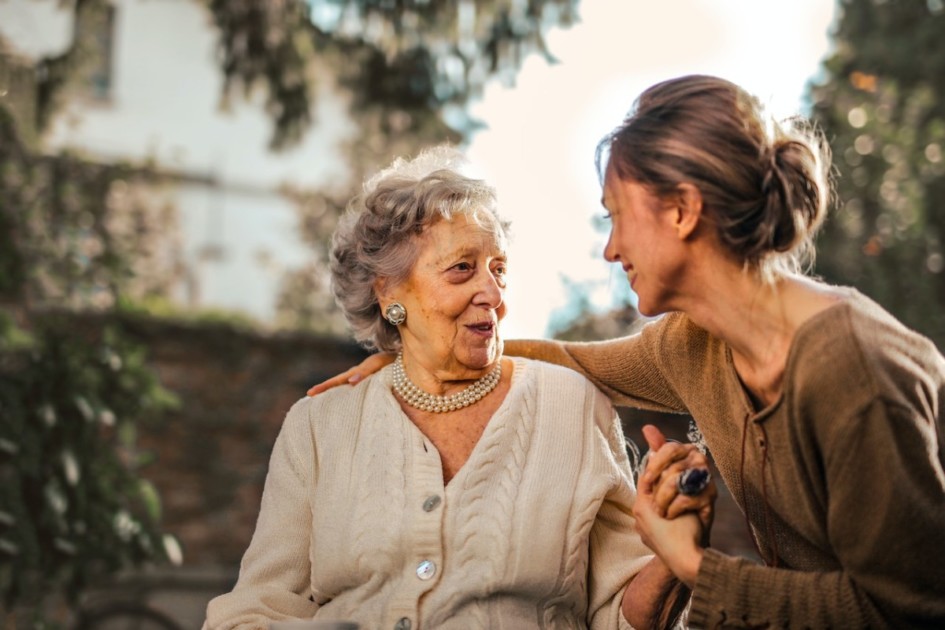
Your loved one’s bedroom
Provide a bedroom that is private and secure
Relocating your loved one to your home is a significant life change. This can be especially tough for those with progressed cases, who may have trouble knowing where they are or who you are. It can get overwhelming, and they need a comforting place to retreat, so providing a private but secure bedroom is essential.
Give your loved one a room on the first floor
If possible, your loved one’s room should be on the first floor with easy access to a bathroom. You can convert an unused office or formal dining room if you don’t have any spare bedrooms. Give your loved one the courtesy of a working door and skip the lock.
If this detail upsets your loved one, assure them you’ve spoken to the entire family about respecting privacy and that no one will barge in uninvited or unannounced unless it’s an emergency.
Opt for carpet in the bedroom
It’s best if the bedroom has wall-to-wall, low-pile carpeting as it will be the most forgiving and provide more floor consistency. Add strips to the bottom of throw rugs to securely fasten them to the floor to increase traction and reduce the chances of tripping. Wood floors should only be treated with non-slip wax and cleaners and tested for slip risk before allowing your loved one to return after cleaning.
Create an obstacle-free path to help your loved one navigate their space easily
Avoid low furniture, such as coffee tables and footrests. Opt for dressers and bed frames without sharp corners, or cover them with plastic bumpers.
Shelves should be low enough to be easily accessible but not jutting into the walkway. Be sure that nothing on shelves could fall and pose a hazard, be it a heavy book that could injure someone or a knickknack that could shatter into a million sharp pieces.
Utilize your loved one’s furniture, especially in their bedroom
Moving into a new place will likely be an emotional and confusing event, but you can make the transition smoother by making it look and feel like home. You may decide to replace their bed with a hospital bed or one with safety rails to help with transport, but keep the old pillows, blankets, and comforter to make it feel like less of a shock.
Remove as much clutter as possible
As Alzheimer’s progresses, those impacted find it increasingly difficult to process their environment. Downsizing your belongings will reduce the amount of stuff to distract, and potentially overwhelm, and your loved one can feel more at ease and focus better.
“Decreasing your loved one’s options is a popular home modification strategy,” states Qualicare, a home health care service in Toronto, ON. “Sometimes, too many things to choose from can feel overwhelming. We try to organize clothing, so clean, matching, ready-to-wear outfits are grouped together – only two or three – and then we offer them the choice of whichever one they’d like to wear that day.”
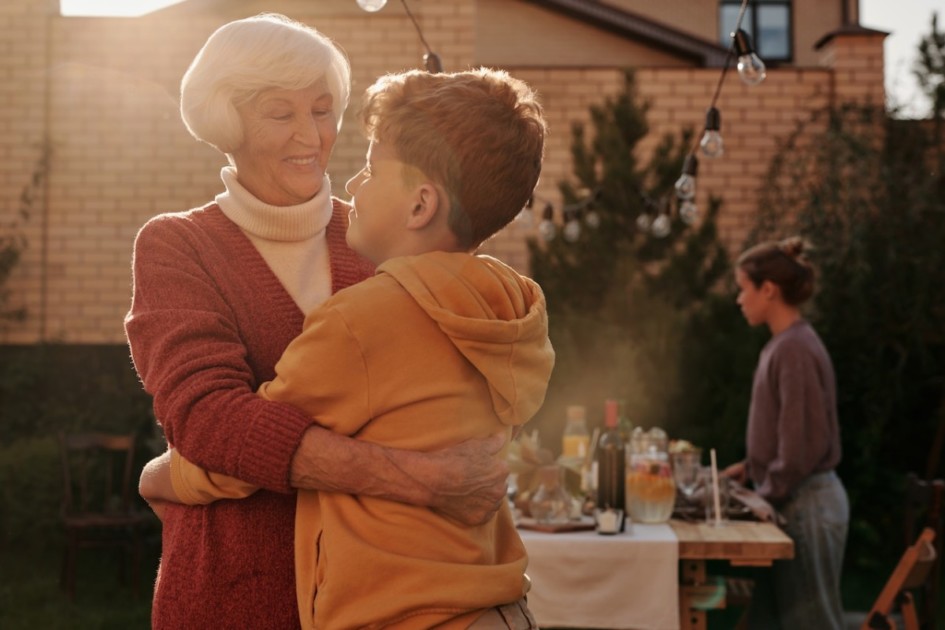
Upgrades to your loved one’s bathroom
Like the bedroom, your loved one’s primary bathroom should be on the first floor
Be sure the path from their room to the bathroom is well-lit with night lights, and put one inside the bathroom near the door to make it easier to spot. Again, try to keep this path relatively simplified to reduce the chances of confusion and clear of tripping hazards.
Be sure the bathroom is accessible
Keep extra rolls of toilet paper within easy reach. You might want to consider adding non-slip tiling to your toilet, tub, and shower area, but be sure that any mats you use have secure, slip-resistant bottoms.
Safety rails with textured grips, shower seats, transfer seats, and roll-in showers are also valuable options to make bathing safer and more accessible for your loved one. A single lever for the faucet is usually easier to turn and operate than two separate knobs, so consider a new faucet head if necessary. Or, mark the faucets with clear “H” and “C” labels, and keep the sink clear of all but the necessary supplies.
Limit clutter by switching to solid prints
If they’re not already, switch to simple prints or solid colors for your towels, shower curtain, bath mat, and other decorative items. If possible, give your loved one their own bathroom, so there’s little clutter and no confusion over which items belong to whom.
Kitchen and dining area improvements
Create clear pathways in your kitchen
Keep counters clear and drawers and cabinets as organized as possible. Avoid hanging too many things on the refrigerator that could make it challenging to identify or process for your loved one.
Label drawers and cabinets with photos
Keep kitchen knives and other sharp utensils in a locked drawer (a child safety-proof lock may be sufficient) and cleaning supplies out of reach. It may even be helpful to set aside separate plates, cups, bowls, and utensils. That way, your loved one only has to go to one area for everything. Reducing the potential for confusion, even in the smallest ways, can make a significant difference.
Double-check that your dining room chairs are sturdy
When it comes to your dining space, make sure your chairs are sturdy and don’t tip easily. If your chairs have wheels, find a non-rolling seat that will be easier to lower into for your loved one. Having a designated seat could even make dining a smoother process as they may not need as much guidance from the kitchen to the dinner table.
Take additional safety measures for the oven and stove
Angela V. McKnight, Founder and CEO of AngelaCARES, a community organization for senior citizens and their caregivers, and a mentor for educating the youth in Jersey City, NJ, recommends installing an automatic shut-off switch on the stove. Find a model that switches the stove off when left unattended. It’s common for a loved one to turn on the oven or stove and never return to check on it.
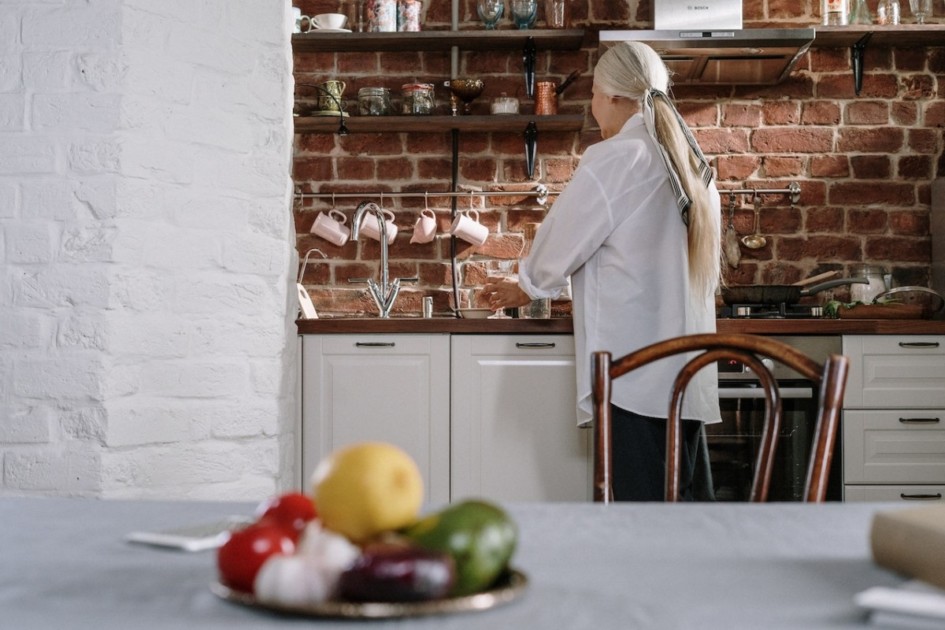
Living area modifications
Simplify your living space
It isn’t necessary to sacrifice your entire sense of décor, but the simpler you can make the main living area, the less overwhelming it will feel to your loved one. The living room is also a great opportunity to incorporate more of their belongings. Some personal touches can make the transition easier, even if it’s a familiar blanket by the couch.
Cut the clutter
Eliminating clutter in common areas may be especially tough if you have children, so embrace easy storage like toy chests and bins. You may even want to keep a “clean up” container to quickly gather debris, which could be especially helpful if your loved one wanders independently.
Avoid rugs or fasten them securely to the floor
If your loved one has a special chair or spot on the sofa they always sit in, be sure there’s a clear path to it. Store remote controls somewhere out of reach so they don’t get lost and keep wires entirely out of the walkways.
If you have a multi-story home, block the stairs with a secure safety gate
There should be railing on at least one side of the stairs, and marking the edges of each step with brightly-colored tape can make them easier to navigate. If the stairs aren’t carpeted, install secure non-skid strips to the steps.
Place decals on sliding glass doors
Because Alzheimer’s can affect a person’s perception, you’ll want to clearly identify any sliding glass doors with decals at your loved one’s eye level. Reduce glare in glass doors and windows.
“Lighting can impact individuals with Alzheimer’s, and keeping the blinds closed during the evening hours can help eliminate reflections and shadows that may create distress,” suggests CareWorks Health Services, a home health care service in Laguna Hills, CA. Try to remove decorative mirrors — an unexpected reflection can sometimes be misunderstood or frightening.
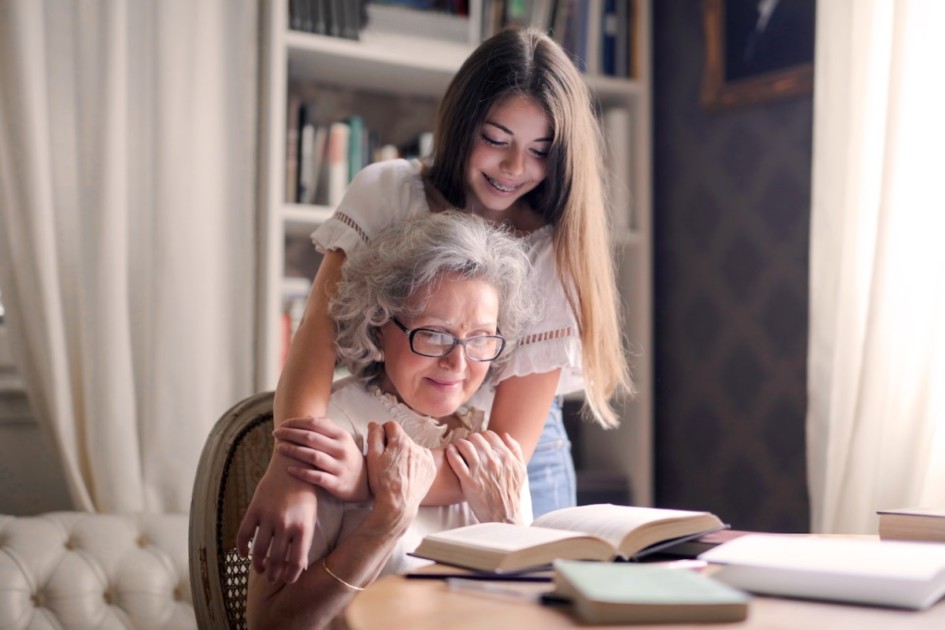
Ease anxiety with a well-lit home
“Non-glaring, even lighting throughout the home can help ease anxiety, including night lights in hallways and other areas,” says Katherine Wells and Francis LeGasse of Mavericks of Senior Living, a podcast that focuses on improving quality of life as we age. “As you work to keep your loved one as independent as they can be (which can change moment to moment), consider how you can simplify the home to reduce confusion.”
Consider replacing existing bulbs with LED bulbs to increase visibility, and installing night lights in the bedroom, bathroom, and hallways. Opt for wall fixtures over floor lamps to keep pathways clear if you need to add more light sources.
Have open communication and be observant
Be sure to keep your loved one a part of the conversation about home modifications as much as possible. Keep following up after they have moved in to ensure there aren’t any new or unforeseen issues that need addressing. However, keep in mind that your loved one may not be able to express the problem, so you and your family will need to keep an eye out constantly.
“Though it can be overwhelming to take on the care and needs of someone else, there are certain truisms that you should remember,” says Family Best Care, a home health care service in Bellevue, WA. “The first is that everyone’s situations are different, so creating a customized plan of care and action is crucial to ensure optimal safety and well-being. The second is that asking for help doesn’t make you weak but smart – whether it’s a trusted family member, friend, or caregiver. Utilize your resources to maximize the positive impact for you and your loved one.”
Uphold patience and dignity, and stay in a routine
“Your loved one deserves your patience and dignity,” states Golden Heart Senior Care. “They’ll repeat themselves. They won’t remember everything. And frequently, the words they remember most and easiest are the unkind words. It’s important to remember that it’s not your loved one who is being unkind, it’s the disease that is. The person likely has no control over what they say and how they say it.”
Golden Heart Senior Care goes on to share that it’s helpful for your loved one to stick to a routine. “If we can keep the care receiver in a routine of doing very similar things daily, it may become a habit and therefore somewhat easier for the care receiver to mimic.”
Final thoughts
“Preparing your home for a loved one with Alzheimer’s disease is challenging enough, says Dr. Jill Bjerke, founder of Silver Spaces, a home assessment provider for aging in place. “But creating a ’safe and secure’ home for a person affected by this disease means consistently monitoring the home environment. As the disease progresses, so do the hazards that can cause harm. Vigilance is necessary to keep the affected person safe, especially from trips and falls.”
The move will probably be a little overwhelming for your loved one, so give them time to adjust. Before long, your loved one will truly feel at home and adapt to the new routine.
Individual results may vary.
This is not intended as a substitute for the services of a licensed and bonded home services professional.
Redfin does not provide medical advice.
All of the material provided on Redfin’s blog, such as text, treatments, dosages, outcomes, charts, patient profiles, graphics, photographs, images, advice, messages, forum postings, and any other material provided on Redfin’s blog are for informational purposes only and are not a substitute for professional medical advice or treatment. Always seek the advice of your physician or other qualified health provider with any questions you may have regarding your health. Never disregard professional medical advice or delay in seeking it because of something you have read on Redfin’s blog.
If you think you may have a medical emergency, call your doctor or 911 immediately. Redfin does not recommend or endorse any specific tests, physicians, products, procedures, opinions, or other information that may be mentioned on Redfin’s blog. Reliance on any information provided by Redfin’s blog, by persons appearing on Redfin’s blog at the invitation of Redfin’s blog, or by other members is solely at your own risk.









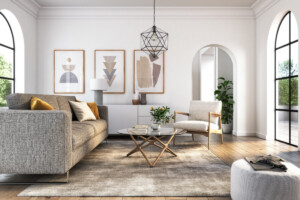

















 United States
United States Canada
Canada